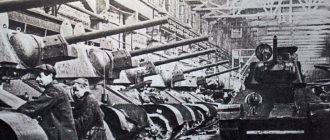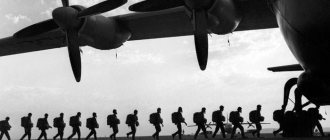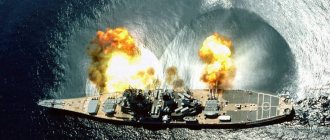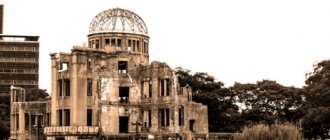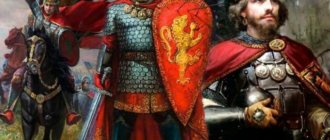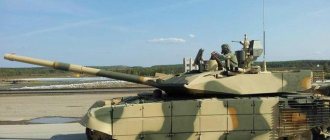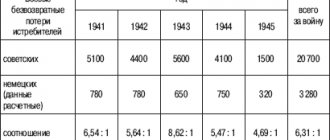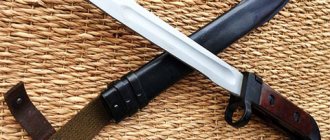Life is half an hour long: how long does a unit live in battle?
Everyone who had even a tangential relationship with the army service or the defense industry has heard about the “lifetime in battle” - of a fighter, a tank, a unit. But what really stands behind these numbers? Is it really possible to start counting down the minutes until the inevitable end when going into battle? The prevailing ideas among the broad masses of military personnel about the time of life in battle were successfully depicted by Oleg Divov in the novel “Weapons of Retribution” - a book about the service of “Ustinov’s students” at the end of Soviet power: “They, proudly: our division is designed for thirty minutes of battle! We tell them openly: we found something to be proud of!” In these two sentences, everything came together - pride in one’s suicide, and the transfer of a misunderstood tactical assessment of the unit’s capability over time to the lives of its personnel, and the rejection of such false pride by more competent comrades...
The idea that there is a calculated life expectancy for individual units and formations came from the practice of staff work, from understanding the experience of the Great Patriotic War. The average period of time during which a regiment or division, according to war experience, remained combat-ready was called the “lifetime.” This does not mean at all that after this period all personnel will be killed by the enemy and the equipment will be burned.
Let's take a division - the main tactical formation. For its functioning, it is necessary that the rifle units have a sufficient number of fighters - and they leave not only killed, but also wounded (from three to six per killed), sick, legs worn down to the bone, or injured by the hatch of an armored personnel carrier... It is necessary that the engineer battalion had a supply of the equipment from which bridges would be built - after all, the supply battalion would use them to carry everything that units and subunits needed in battle and on the march. It is required that the repair and restoration battalion have the necessary number of spare parts and tools to maintain the equipment in working / combat-ready condition. And all these reserves are not unlimited. The use of heavy mechanized bridges TMM-3 or links of the pontoon-bridge fleet will lead to a sharp decrease in the offensive capabilities of the formation and will limit its “life” in the operation.
Disastrous meters
These are factors that influence the viability of a formation, but are not related to enemy resistance. Now let's turn to assessing the time of “life in battle”. How long can an individual soldier survive in a battle fought with the use of one weapon or another, using one or another tactic. The first serious experience of such calculations was presented in the unique work “Future War in Technical, Economic and Political Relations.” The book was published in six volumes in 1898, and its author was Warsaw banker and railway worker Ivan Blioch.
The financier Bliokh, accustomed to numbers, with the help of a unique team he assembled, consisting of General Staff officers, tried to mathematically evaluate the impact of new types of weapons - repeating rifles, machine guns, artillery guns with smokeless powder and with a high charge - on the then types of tactics. The technique was very simple. The battalion's offensive plan was taken from the French military manual of 1890. We took the probabilities of hitting a tall target by an entrenched shooter using three-line rifles, obtained at the training ground. The speeds at which the chain of riflemen moved to the beat of drums and the sounds of horns were well known - both for walking and for running, which the French were going to switch to when approaching the enemy. Next came the most ordinary arithmetic, which gave an astonishing result. If, from a line of 500 m, 637 infantrymen begin to approach a hundred dug-in riflemen with repeating rifles, then even with all the speed of the French rush to the line of 25 m, from which it was then considered appropriate to switch to the bayonet line, only a hundred will remain. There were no machine guns, which were then used by the artillery department - ordinary sapper shovels for digging in and repeating rifles for shooting. And now the position of the riflemen is no longer able to be taken by the six times greater mass of infantry - after all, a hundred who ran half a mile under fire and in a bayonet battle have little chance against a hundred lying in a trench.
Pacifism in numbers
At the time of the release of “The Future War,” peace still reigned in Europe, but in Bliokh’s simple arithmetic calculations the whole picture of the coming First World War, its positional impasse, was already visible. No matter how trained and devoted the soldiers are to the banner, the advancing masses of infantry will be swept away by the fire of the defending infantry. This is what happened in reality - for specifics we will refer the reader to Barbara Tuckman’s book “The Guns of August”. The fact that in the later phases of the war the advancing infantry was stopped not by riflemen, but by machine gunners who had sat out the artillery barrage in dugouts, essentially did not change anything.
Based on Bliokh's methodology, it is very simple to calculate the expected life time of an infantryman in battle when advancing from the 500 m line to the 25 m line. As we can see, 537 out of 637 soldiers died or were seriously wounded during the time of overcoming 475 m. From the diagram given in the book it is clear how The lifespan was reduced when approaching the enemy, as was the likelihood of dying when reaching 300, 200 m... The results turned out to be so clear that Bliokh considered them sufficient to justify the impossibility of a European war and therefore took care of the maximum dissemination of his work. Reading Blioch's book prompted Nicholas II to convene the first peace conference on disarmament in 1899 in The Hague. The author himself was nominated for the Nobel Peace Prize.
However, Bliokh’s calculations were not destined to stop the coming massacre... But there were a lot of other calculations in the book. For example, it was shown that a hundred shooters with repeating rifles would disable an artillery battery in 2 minutes from a distance of 800 m and in 18 minutes from a distance of 1500 m - isn’t it, similar to the artillery paratroopers described by Divov with their 30 minutes of battalion life?
World War III? Better not!
The works of those military specialists who were preparing not for the prevention, but for the successful conduct of war, as the Cold War escalated into the hot Third World War, were not widely published. But - paradoxically - it was precisely these works that were destined to contribute to the preservation of peace. And so, in the narrow circles of staff officers not inclined to publicity, the calculated parameter “lifetime in battle” began to be used. For a tank, for an armored personnel carrier, for a unit. The values for these parameters were obtained in approximately the same way as Bliokh once did. They took an anti-tank gun, and at the training ground they determined the probability of hitting the silhouette of the vehicle. They used one or another tank as a target (at the beginning of the Cold War, both warring sides used captured German equipment for these purposes) and checked the likelihood of a shell hit piercing the armor or an action behind the armor that would disable the vehicle.
As a result of the chain of calculations, the very life time of a piece of equipment in a given tactical situation was derived. It was a purely calculated value. Probably, many have heard about such monetary units as the Attic talent or the South German thaler. The first contained 26,106 g of silver, the second - only 16.67 g of the same metal, but both never existed in the form of a coin, but were just a measure of account for smaller money - drachmas or pennies. Likewise, a tank that has to survive exactly 17 minutes in an oncoming battle is nothing more than a mathematical abstraction. We are talking only about an integral estimate convenient for the time of arithmometers and slide rules. Without resorting to complex calculations, the staff officer could determine how many tanks would be needed for a combat mission that required covering a particular distance under fire. We bring together distance, combat speed and life time. We determine according to the standards how many tanks should remain in service across the width of the front after they go through the hell of battle. And it is immediately clear which unit of what size should be entrusted with the combat mission. The predicted failure of the tanks did not necessarily mean the death of the crews. As driver-mechanic Shcherbak cynically argued in the story of front-line officer Viktor Kurochkin “In War as in War,” “It would be happiness if the Fritz rolled a blank into the engine compartment: the car would be kaput, and everyone would be alive.” And for the artillery division, the exhaustion of the half-hour of battle for which it was designed meant, first of all, the use of ammunition, overheating of the barrels and recoil arms, the need to withdraw from positions, and not death under fire.
Neutron factor
The conditional “lifetime in battle” successfully served staff officers even when it was necessary to determine the combat effectiveness of advancing tank units in the conditions of the enemy’s use of neutron warheads; when it was necessary to estimate how powerful a nuclear strike would burn out enemy anti-tank missiles and extend the life of their tanks. The problems of using gigantic power were solved by the simplest equations: they gave an unambiguous conclusion - a nuclear war in the European theater of operations must be avoided.
Well, modern combat control systems, from the highest level, such as the National Defense Control Center of the Russian Federation to tactical ones, such as the Constellation Unified Tactical Control System, use more differentiated and more accurate modeling parameters, which are now carried out in real time. However, the goal function remains the same - to make sure that both people and machines survive in combat for the maximum amount of time.
Although everyone knows for sure that the life of a tank in modern combat...
The lifespan of a tank in modern combat...
... according to “completely reliable information” ranges from 0.1 seconds to 12 minutes. And for this very reason, the tank does not need durable [here you can insert any part of the tank and its crew, if we are talking about this].
It's just a stupid saying. Tale. They invented it for table bragging. They say that we are such brave kamikazes, on the verge of death, but we are not at all bashful, and even proud. And this is exactly what needs to be raised... There is nothing wrong with such bragging - men have always done and do this, it just strengthens their fighting spirit.
But for some reason, many take this seriously and try to draw conclusions about the structure of military equipment. Don't do that. I'll explain in simple terms why you shouldn't.
Don't do that. I'll explain in simple terms why you shouldn't.
Here you have an ordinary tank battalion of 30 combat tanks. And he enters into that very “modern war.” Let’s immediately discard the option where a nuclear strike is carried out on a battalion with a megaton warhead. There aren’t that many warheads; they won’t waste them on every little thing. Also, we will not consider the brave (and suicidal) attack of BT-7 tanks on the dug-in Acht-acht division.
Let this be a normal war. Like in 1944 or how it seems today. A normal full-fledged modern army versus a comparable one.
Our battalion will first march, concentrate somewhere, march again, go to lines, go to other lines... But sooner or later it will enter the battle. Let's say it's a full team. It doesn’t matter whether as a whole or in separate platoons assigned to someone. AND?
And a comparable enemy will inflict heavy losses on him - a third irrevocable or for factory repairs. These are very heavy losses. It will still remain a battalion, but with greatly weakened capabilities. If the losses were 50%, then we would be talking about a defeated battalion, the remainder would be about a company. And if it’s even more, then this is a destroyed battalion.
Why are such gradations needed? – And then that you would like to achieve your goals and maintain the combat effectiveness of your strike unit. It is unlikely that you will want to lose it for these purposes - the war will not end in the evening. And will your goals be achieved if the battalion is defeated or destroyed in the process? Therefore, you won’t send your battalion to such a fornication. Or take him away while you still have him, in case of unpleasant surprises. Therefore, a third of losses is the upper limit of losses in a “normal” “modern” battle.
OK. And our rear service does an excellent job and replenishes the lost materiel with just a fly. A week later you have ten new tanks - the composition has been restored. And you go into a new harsh battle.
Just don’t think that battles are so intense that you lose a third of your equipment and l/s can be daily. Isn’t this our Kursk Bulge? And this way, any division will have enough for three days. No, if, after all, the Kursk Bulge, then it is possible. But it wasn’t like that there either. Some division disappeared as a factor in one day, others went the next day, and for them everything was not so sad. You cannot attack enemy positions again and again every day with huge losses with the same troops. So after three attacks your army will run out and you will have to stop this business. Or will you break the adversary, and then catch up, finish off, trophies...
Briefly speaking. A tough fight every week is a very big exaggeration, but let's say, let's say.
So, we will lose 10 tanks again. Of these, 6.7 will be from the initial number, and 3.3 from the replenishment. We bring in new ones again and again lose a third in another week. Well, one more iteration. This is what comes out.
After a month of fierce fierce battles, the battalion includes tanks with a service life of:
– 4 weeks – 6 pieces,
– 3 weeks – 3 pieces,
– 2 weeks – 4 pieces,
– 1 week – 7 pieces,
- new - 10 pieces.
Purely mathematically, the oldest tanks will never run out. And all the equipment will be on average and mostly old. And it will be necessary to fight on it until the service life of the engine and transmission is exhausted, and after they are replaced in the field, until the service life of the gun barrel is exhausted. That is, everything there must be strong, durable, repairable, and the crews must be trained.
Although everyone knows for sure that the life of a tank in modern combat...
Source
In this article we will talk about ways to increase the survivability of tanks in battle. First, let's define the concept of modern tanks of the world
. Modern tanks are considered to be the latest generation tanks produced by world leaders in the field of tank building. These vehicles include: the American M1 Abrams, the British Challenger 2, the German Leopard 2, the French Leclerc, the Japanese Type 90 and the Russian T-80 and T-90 (as well as those upgraded to its level T-72).
The problem of tank security has always been the most important for designers; throughout the existence of tanks there has been a struggle between armor and projectiles. Moreover, it always goes with varying degrees of success, either gunsmiths create effective means of destruction, or tank builders successfully protect the vehicle.
Currently, two main directions can be distinguished for increasing the survivability of armored vehicles.
The first way is passive. This path has been used by tank designers throughout its history. In modern conditions, a simple increase in the thickness of armor has reached the limit of its development, and is limited by the mass of the tank. Therefore, new methods of passive protection are being introduced - dynamic protection. The basic principle of operation of such protection is the impact of blocks filled with explosives on the projectile. Moreover, mounted dynamic protection is capable of protecting only from cumulative projectiles, while built-in dynamic protection provides additional protection from sub-caliber projectiles. Currently, passive protection means can seriously increase the survivability of a tank in combat using ground-based weapons; protection against hand-held anti-tank grenade launchers is especially greatly enhanced.
The second way is active. The essence of this path is to equip the tank with means of detecting and destroying enemy ammunition attacking the tank. The principle of operation of such protective equipment is the use of millimeter-wave radars, capable of promptly detecting danger and issuing target designation to eliminate it. In turn, active means of protection are also divided into two groups. The means of the first group, such as the Shtora system, create a cloud of interference, disrupting the aim of the enemy’s controlled weapons. And the means of the second group, such as the Arena system, destroy the means of destruction of the tank by detonating special charges. Active protection makes it possible not only to protect a tank from ground attack weapons, but also from air attacks, which has become especially important in modern conditions.
But one thing is clear, the confrontation between armor and projectile continues, and modern tanks of the world will see more than one round of this competition.
Newer news items:
- A paradoxical situation arose in the Soviet Union when three types of tanks were produced simultaneously, each of which was called the main battle tank...
">Russian tanks in Ukraine
- The largest tank in the world is the so-called “Tsar Tank”. It was released in 1915. This machine has other names, such as: Mammoth, ...
“>The Tsar is a tank, the single largest tank in the world
- "Black Eagle" is a fourth-generation domestic tank with excellent technical and combat characteristics. Developed by Omsk Construct...
">Characteristics of the best representative of black battle tanks
- A tank is an armored vehicle, in most cases equipped with caterpillar tracks, and most often with cannon armament as a combat weapon...
">World history the creation of tanks
- The T-34 tank was created at the Kharkov Locomotive Plant under the leadership of designer Mikhail Koshkin. The car after eliminating the defects and...
“>How the Thirty-Four became the best medium tank of the Second World War.
Older news items:
- During its existence, the Soviet Union built more tanks than all the countries in the world combined. It’s not for nothing that the tank became a symbol of the Soviet threat to...
">Soviet tanks of the Second World War
- Since the creation of tanks, military theorists have been constantly tormented by the question: what is the main thing in a tank? There have always been three main criteria: mobility, armor protection...
“>What is the main thing in a tank?
- Tanks owe their appearance to the First World War. When the opponents were firmly entrenched in defensive fortifications, the question arose of how to change...
">Combat vehicles - tanks: appearance and application
- The emergence of mobile means of destroying tank equipment led to the appearance of tank support vehicles among the combat vehicles. One of the advanced developments...
">Tank support combat vehicle
- In 1950, the USSR Ministry of Defense issued tactical and technical requirements for a tank with a minimum frontal and side projection area, equipped…
">SU-100M or object 416
Next page >>
